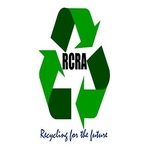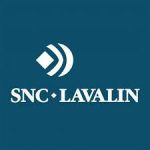Water and wastewater construction is a critical process that involves designing, building, and maintaining facilities that provide clean water and manage wastewater. This includes constructing water treatment plants, distribution systems, sewage treatment plants, and related infrastructure. It’s crucial for public health, sanitation, and protecting the environment. The process includes site selection, design, permitting, procurement, and construction. It also involves maintaining and upgrading existing infrastructure to ensure it meets community needs and environmental standards.
GAO RFID Inc., a global top 10 leader in RFID, has extensive experience in the water and wastewater construction
GAO RFID Systems & Hardware for the Water and Wastewater Construction
GAO RFID Inc. offers the largest selection of BLE gateways, BLE beacons, RFID readers, tags, antennas, printers, and integrated RFID systems for various industries, including the water and wastewater construction industry.
BLE (Bluetooth Low Energy)
GAO offers advanced BLE gateways:
as well as versatile beacons with important functions such as temperature, humidity, vibration, and panic button:
GAO’s BLE technology is suitable for all kinds of industries, including the water and wastewater construction industry.
UHF (Ultra High Frequency) RFID
GAO offers the largest selection of UHF RFID readers for various industries, including the water and wastewater construction industry:
GAO RFID offers the widest choice of UHF RFID tags, labels, badges, and wristbands for various industries, including the water and wastewater construction industry:
and an array of antennas to address different applications:
HF (High Frequency), NFC (Near Field Communications), and LF (Low Frequency) RFID
GAO offers the largest selection of HF, NFC, and LF RFID readers for various industries, including the water and wastewater construction industry:
- High Frequency 13.56 MHz Passive RFID Readers
- Low Frequency 134 kHz Passive RFID Readers
- Low Frequency 125 kHz Passive RFID Readers
HF, NFC, and LF RFID tags, labels, badges, and wristbands for various industries, including the water and wastewater construction industry:
and antennas:
GAO also offers RFID printers, Digital I/O adapters and relay controllers:
For embedded applications, GAO offers UHF, HF and LF RFID reader modules suitable for use in the water and wastewater construction industry:
UHF 860-960 MHz RFID modules:
13.56 MHz high-frequency RFID modules:
125 kHz low-frequency RFID modules:
The RFID systems provided by GAO are highly popular among clients in the water and wastewater construction industry for various purposes:
Personnel or worker tracking system:
Physical asset or operational equipment tracking system:
Personnel or people access control system:
Parking or vehicle control system:
There are two versions of GAO’s software, one is running on a local server, and another running in the cloud.
Benefits of GAO’s RFID, BLE, IoT & Drones for the Water and Wastewater Construction
RFID, BLE, IoT and drones technologies from GAO RFID Inc. offer many benefits for the Water and Wastewater Construction Industry:
Benefits of RFID:
- Improved inventory management: GAO RFID can be used to track the location and status of equipment, tools, and materials, making it easier to manage inventory and reduce the risk of theft or loss.
- Enhanced asset tracking: GAO RFID tags can be attached to equipment and infrastructure, allowing for real-time tracking and monitoring of assets. This helps to improve asset management, reduce downtime, and prevent costly breakdowns.
- Reduced maintenance costs: GAO RFID can be used to monitor equipment and infrastructure for signs of wear and tear, allowing for proactive maintenance and repair. This reduces the need for reactive maintenance and can help to reduce maintenance costs.
- Improved effectiveness: GAO RFID can be used to automate processes, reducing the need for manual intervention and improving overall efficiency. For example, GAO RFID can be used to automatically track and log water quality data, reducing the need for manual data entry.
- Improved safety and security: GAO RFID tags can be used to improve safety and security by tracking the location of personnel and equipment. This can help to prevent accidents and reduce the risk of theft or vandalism.
Benefits of BLE:
- Real-time monitoring: GAO BLE beacons can be used to provide real-time monitoring of water and wastewater systems, allowing for rapid response to issues and better management of system performance.
- Improved data collection: GAO BLE beacons can collect real-time data on water quality, flow rates, and other parameters. This data can be used to optimize treatment processes, identify potential problems, and improve overall system performance.
- Reduced maintenance costs: GAO BLE beacons can be used to monitor equipment and infrastructure for signs of wear and tear, allowing for proactive maintenance and repair. This reduces the need for reactive maintenance and can help to reduce maintenance costs.
- Increased efficiency: GAO BLE beacons can be used to automate processes, reducing the need for manual intervention and improving overall efficiency. For example, BLE sensors can be used to automatically adjust treatment processes based on real-time data, improving treatment efficiency and reducing energy consumption.
Benefits of applying combination of GAO RFID and drones:
The combination of Radio Frequency Identification (RFID) technology and drones can offer several benefits to water and wastewater construction projects, such as:
- Accurate and real-time tracking: GAO RFID tags can be placed on construction materials and equipment, which can be detected by drones equipped with RFID readers. This can provide accurate and real-time tracking of materials and equipment, ensuring that they are delivered to the right location at the right time.
- Improved inventory management: GAO RFID tags can also help in inventory management by providing real-time visibility into the availability and location of materials and equipment. This can help in avoiding delays and ensuring that the construction project stays on schedule.
- Faster and more efficient construction: By using drones to transport materials and equipment, construction projects can be completed faster and more efficiently. Drones can navigate through difficult terrain and deliver materials to hard-to-reach locations, reducing the time and cost of transportation.
Benefits of applying combination of GAO RFID and IoT:
- Real-time monitoring: IoT sensors can be used to monitor various parameters such as water flow, water quality, and temperature, providing real-time data that can be analyzed to improve the construction process.
- Efficient inventory management: GAO RFID tags can be placed on materials and equipment, which can be tracked in real-time using IoT sensors. This can help in efficient inventory management, ensuring that the right materials and equipment are available when needed, reducing delays and improving overall efficiency.
- Improved safety: IoT sensors can be used to monitor worker safety by detecting potential hazards and providing real-time alerts. This can help in preventing accidents and improving overall safety.
- Reduced costs: By using GAO RFID and IoT technologies, construction projects can be completed faster and more efficiently, reducing overall costs. Predictive maintenance can also help in reducing equipment downtime and maintenance costs.
GAO Helps Customers Comply with Standards, Mandates & Regulations
GAO RFID Inc. has helped many companies in the Water and Wastewater Construction industry to deploy RFID systems and to ensure such deployments complying with the applicable industry standards, mandates and government regulations:
- ISO 18000-6C: This is a global standard for RFID technology that operates in the UHF frequency band (860-960 MHz). It is commonly used in water and wastewater construction for asset tracking and inventory management.
- EPC Global: This is a set of standards developed by the industry group EPC Global for supply chain management and RFID technology. The EPC Global standards are commonly used in water and wastewater construction for asset tracking, inventory management, and data collection.
- Clean Water Act (CWA): This federal law regulates discharges of pollutants into U.S. waters, including surface water and groundwater. It also establishes water quality standards and permits for point source discharges, such as wastewater treatment plants.
- Safe Drinking Water Act (SDWA): This law sets national standards for drinking water quality and regulates the underground injection of fluids, including wastewater.
- National Pollutant Discharge Elimination System (NPDES): This program under the CWA requires permits for discharges of pollutants into U.S. waters, including stormwater runoff from construction sites.
- Resource Conservation and Recovery Act (RCRA): This law regulates hazardous waste from cradle to grave, including waste generated during water and wastewater treatment.
- Canadian Environmental Protection Act (CEPA): This federal law regulates the disposal of harmful substances into the environment, including water and wastewater, and sets national standards for water quality.
- Fisheries Act: This law regulates activities that may impact fish habitats, including water and wastewater construction projects.
- Environmental Assessment Act (CEAA): This law requires federal agencies to assess the environmental impacts of major federal projects, including water and wastewater construction projects.
- Canadian Water Quality Guidelines: These are national guidelines for water quality in Canada, which can be used as a reference for water and wastewater construction projects.
Case Studies of RFID Applications
Here are two cases of applying RFID in the Water and Wastewater Construction Industry
This case study comes from a company called ProSoft Technology, which provides automation solutions to various industries including water and wastewater. The company implemented an RFID-based system for a water utility company in the United States that was looking to improve the accuracy and efficiency of its water meter installation process. The previous process involved manually tracking the location of water meters and their corresponding installation dates, which led to errors and delays.ProSoft Technology implemented an RFID-based system that involved attaching RFID tags to each water meter and using handheld RFID readers to scan the tags during the installation process. The RFID readers were linked to a central database, which allowed for real-time tracking of the location and installation date of each water meter.
In 2017, the Los Angeles County Sanitation District (LACSD) in California implemented an RFID-based system to track the movement of wastewater sludge within its facilities. The previous manual tracking process involved paper-based records and led to errors and delays.The RFID-based system involved attaching RFID tags to containers of wastewater sludge and using RFID readers to track the movement of the containers within the facilities. The RFID readers were connected to a central database, which allowed for real-time tracking of the location and movement of the wastewater sludge.
GAO Has Served the Water and Wastewater Construction Extensively
GAO RFID Inc., a global top 10 leader in RFID, has served many leading companies in the Water and Wastewater Construction, including its various divisions such as
- Wastewater treatment plants: These facilities are responsible for treating and disposing of wastewater from homes, businesses, and other facilities.
- Pumping stations: These facilities are responsible for pumping water and wastewater to and from treatment facilities, reservoirs, and distribution systems.
- Water storage facilities: These facilities are responsible for storing treated water before it is distributed to consumers.
- Water and wastewater distribution systems: These systems are responsible for delivering treated water to consumers and collecting wastewater from consumers for treatment.
List of the leading companies in the water and wastewater construction industry in the U.S.:
List of the leading companies in the water and wastewater construction industry in the Canada:

































